HTML5 supports embedded media through the HTML tags "audio" and "video", allowing developers to easily embed media into HTML documents.
Embed MediaEDIT
Embed media in HTML:
<video src="http://v2v.cc/~j/theora_testsuite/320x240.ogg" controls> 你的浏览器不支持 <code>video</code> 标签.</video>
This example shows a playable video with a playback controller, video Sourced from Theora website.
The following is an example of embedding audio into an HTML document.
<audio src="/test/audio.ogg"><p>你的浏览器不支持audio标签</p></audio>
srcAttribute can be set to the URL of an audio file or the path to a local file.
<audio src="audio.ogg" controls autoplay loop><p>你的浏览器不支持audio标签</p></audio>
The code of this example uses some attributes of the HTML "audio" element:
controls: Display standard HTML5 controllers for audio in web pages.
autoplay : Make the audio play automatically.
loop: Make the audio play automatically and repeatedly.
<audio src="audio.mp3" preload="auto" controls></audio>
The preload attribute is used to buffer large files with audio elements. There are three attribute values to set:
"none" does not buffer files
"auto" Buffering audio files
"metadata" Only buffering file metadata
You can use the
<video controls> <source src="foo.ogg" type="video/ogg"> <source src="foo.mp4" type="video/mp4"> Your browser does not support the <code>video</code> element.</video>
When the browser supports the Ogg format, this code will play the Ogg file. If the browser does not support Ogg, the browser will play MPEG-4 file. See the list of media formats supported by audio and video elements to see the support for video and audio encoding formats by different browsers.
You can also specify the video codec value required by the video file; this allows the browser to make a more correct decision:
<video controls> <source src="foo.ogg" type="video/ogg; codecs= dir ac, speex"> Your browser does not support the <code>video</code> element.</video>
Here, we specify the video tag using Dirac and Speex video codec. If the browser supports Ogg but does not support the specified codec, the video will not be loaded.
If the type attribute is not specified, the media type will be returned to the server and then checked to see if the browser can resolve it; if it cannot be executed, the next source is checked. If none of the specified source elements are available, an error event is dispatched to the video tag. If the type attribute is specified, it will be compared with the types that the browser can play. If it is not recognized, the server will not even be asked; instead, the next source will be checked at the same time.
Click on Media Events to view the complete list of media playback events. To see details about the media formats supported by different browsers, click Media formats supported by the audio and video elements.
Media Playback ControlEDIT
After you have embedded media into an HTML document using new elements, you can control them programmatically using JavaScript code. For example, if you want to (re)start playback, you can write the following code:
var v = document.getElementsByTagName("video")[0];v.play();The first line obtains the first video element in the current document, and the next line calls the play() method of the element. This method is defined in the interface that implements the media element.
Controlling the play, pause, volume increase and decrease of an HTML5 audio player is straightforward:
<audio id="demo" src="audio.mp3"></audio><p> <button onclick ="document.getElementById('demo').play()">播放声音</button> <button onclick="document.getElementById('demo').pause()">暂停声音</button> <button onclick="document.getElementById('demo').volume+=0.1">提高音量</button> <button onclick="document.getElementById('demo').volume-=0.1">降低音量</button></p>
Terminate media download EDIT
Stopping media playback is as simple as calling the pause() method. However, the browser will continue to download media until the media elements are recycled by the garbage collection mechanism.
Here's how to stop media downloads immediately:
var mediaElement = document.getElementById("myMediaElementID");
mediaElement.pause();
mediaElement.src='';
//or
mediaElement.removeAttribute("src");By removing the src attribute of the media element (or simply setting it to an empty string - this Depending on the browser), you can destroy the element's internal decoding, thus ending the media download. The removeAttribute() operation is not clean, and setting the 'src' attribute of the
Find EDIT in media
Media elements support moving from the current playback position to a specific point in the content of the media. This is accomplished by setting the value of the element's currentTime property; see HTMLMediaElement for details on element properties. Simply set the time in seconds you want playback to continue.
你可以使用元素的属性seekable来决定媒体目前能查找的范围。它返回一个你可以查找的TimeRanges 时间对象。
var mediaElement = document.getElementById('mediaElementID');
mediaElement.seekable.start();
// 返回开始时间
(in seconds)mediaElement.seekable.end();
// 返回结束时间 (in seconds)mediaElement.currentTime = 122;
// 设定在 122 secondsmediaElement.played.end();
// 返回浏览器播放的秒数标记播放范围EDIT
在给一个
一条指定时间范围的语句:
#t=[starttime][,endtime]
时间值可以被指定为秒数(如浮点数)或者为以冒号分隔时/分/秒格式(像2小时5分钟1秒表示为2:05:01)。
【相关推荐】
4. 简述
5. 分析H5网页中video标签中的MP4视频无法播放的缘由
The above is the detailed content of Teach you how to use HTML5 audio and video well. For more information, please follow other related articles on the PHP Chinese website!
 html5的div一行可以放两个吗Apr 25, 2022 pm 05:32 PM
html5的div一行可以放两个吗Apr 25, 2022 pm 05:32 PMhtml5的div元素默认一行不可以放两个。div是一个块级元素,一个元素会独占一行,两个div默认无法在同一行显示;但可以通过给div元素添加“display:inline;”样式,将其转为行内元素,就可以实现多个div在同一行显示了。
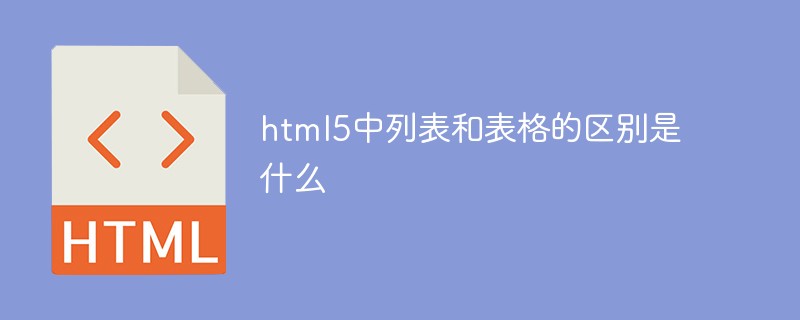 html5中列表和表格的区别是什么Apr 28, 2022 pm 01:58 PM
html5中列表和表格的区别是什么Apr 28, 2022 pm 01:58 PMhtml5中列表和表格的区别:1、表格主要是用于显示数据的,而列表主要是用于给数据进行布局;2、表格是使用table标签配合tr、td、th等标签进行定义的,列表是利用li标签配合ol、ul等标签进行定义的。
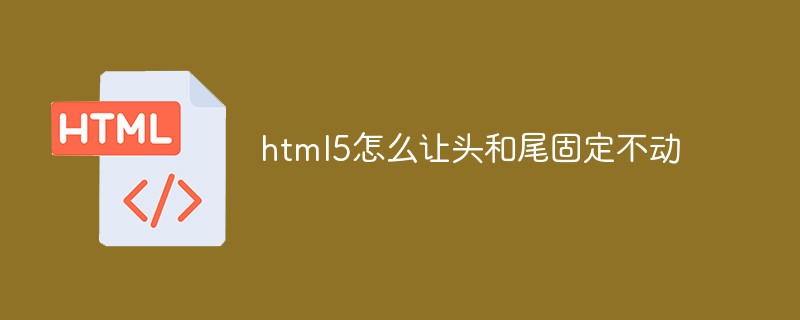 html5怎么让头和尾固定不动Apr 25, 2022 pm 02:30 PM
html5怎么让头和尾固定不动Apr 25, 2022 pm 02:30 PM固定方法:1、使用header标签定义文档头部内容,并添加“position:fixed;top:0;”样式让其固定不动;2、使用footer标签定义尾部内容,并添加“position: fixed;bottom: 0;”样式让其固定不动。
 HTML5中画布标签是什么May 18, 2022 pm 04:55 PM
HTML5中画布标签是什么May 18, 2022 pm 04:55 PMHTML5中画布标签是“<canvas>”。canvas标签用于图形的绘制,它只是一个矩形的图形容器,绘制图形必须通过脚本(通常是JavaScript)来完成;开发者可利用多种js方法来在canvas中绘制路径、盒、圆、字符以及添加图像等。
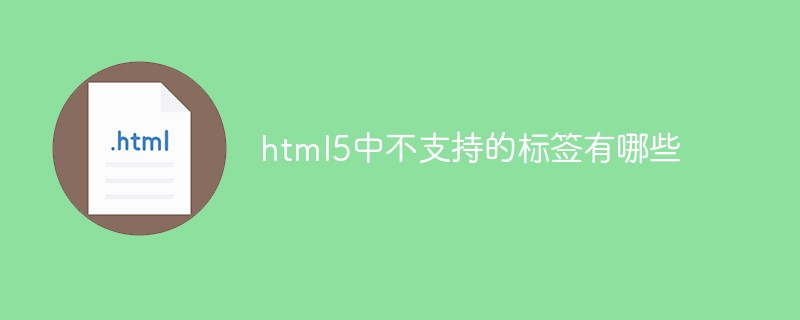 html5中不支持的标签有哪些Mar 17, 2022 pm 05:43 PM
html5中不支持的标签有哪些Mar 17, 2022 pm 05:43 PMhtml5中不支持的标签有:1、acronym,用于定义首字母缩写,可用abbr替代;2、basefont,可利用css样式替代;3、applet,可用object替代;4、dir,定义目录列表,可用ul替代;5、big,定义大号文本等等。
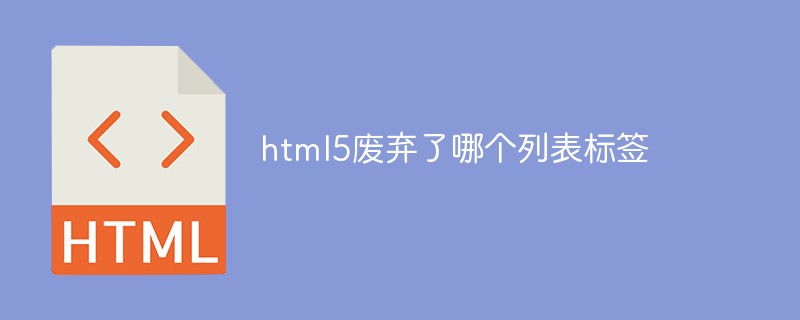 html5废弃了哪个列表标签Jun 01, 2022 pm 06:32 PM
html5废弃了哪个列表标签Jun 01, 2022 pm 06:32 PMhtml5废弃了dir列表标签。dir标签被用来定义目录列表,一般和li标签配合使用,在dir标签对中通过li标签来设置列表项,语法“<dir><li>列表项值</li>...</dir>”。HTML5已经不支持dir,可使用ul标签取代。
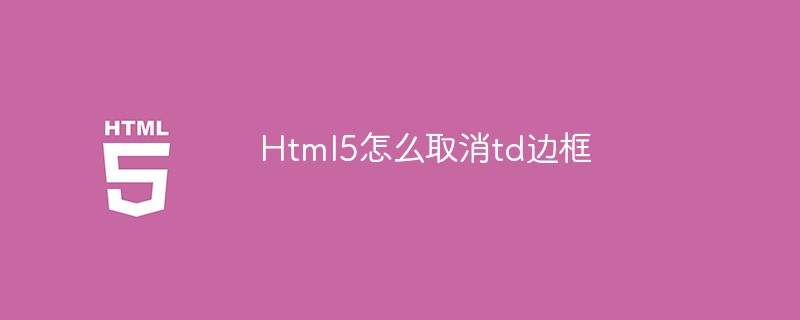 Html5怎么取消td边框May 18, 2022 pm 06:57 PM
Html5怎么取消td边框May 18, 2022 pm 06:57 PM3种取消方法:1、给td元素添加“border:none”无边框样式即可,语法“td{border:none}”。2、给td元素添加“border:0”样式,语法“td{border:0;}”,将td边框的宽度设置为0即可。3、给td元素添加“border:transparent”样式,语法“td{border:transparent;}”,将td边框的颜色设置为透明即可。
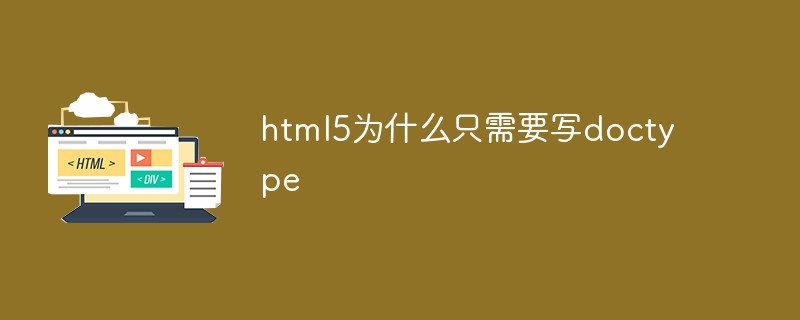 html5为什么只需要写doctypeJun 07, 2022 pm 05:15 PM
html5为什么只需要写doctypeJun 07, 2022 pm 05:15 PM因为html5不基于SGML(标准通用置标语言),不需要对DTD进行引用,但是需要doctype来规范浏览器的行为,也即按照正常的方式来运行,因此html5只需要写doctype即可。“!DOCTYPE”是一种标准通用标记语言的文档类型声明,用于告诉浏览器编写页面所用的标记的版本。


Hot AI Tools

Undresser.AI Undress
AI-powered app for creating realistic nude photos

AI Clothes Remover
Online AI tool for removing clothes from photos.

Undress AI Tool
Undress images for free

Clothoff.io
AI clothes remover

AI Hentai Generator
Generate AI Hentai for free.

Hot Article

Hot Tools

EditPlus Chinese cracked version
Small size, syntax highlighting, does not support code prompt function

Safe Exam Browser
Safe Exam Browser is a secure browser environment for taking online exams securely. This software turns any computer into a secure workstation. It controls access to any utility and prevents students from using unauthorized resources.

Dreamweaver CS6
Visual web development tools

SublimeText3 Linux new version
SublimeText3 Linux latest version

mPDF
mPDF is a PHP library that can generate PDF files from UTF-8 encoded HTML. The original author, Ian Back, wrote mPDF to output PDF files "on the fly" from his website and handle different languages. It is slower than original scripts like HTML2FPDF and produces larger files when using Unicode fonts, but supports CSS styles etc. and has a lot of enhancements. Supports almost all languages, including RTL (Arabic and Hebrew) and CJK (Chinese, Japanese and Korean). Supports nested block-level elements (such as P, DIV),






